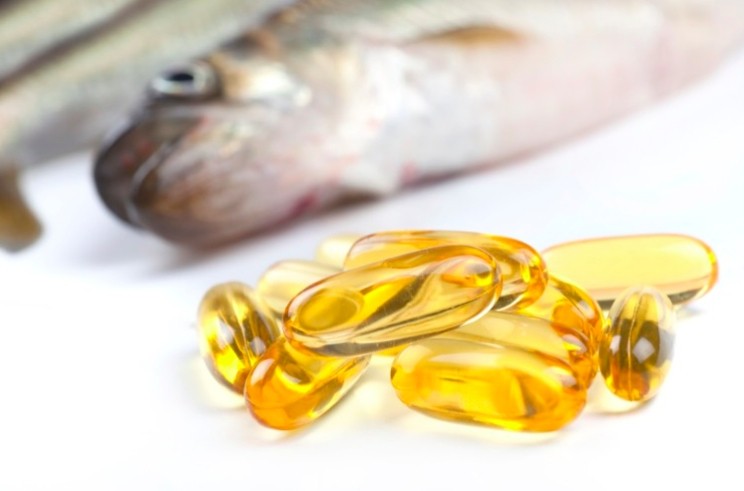Study confirms emulsification boosts EPA and DHA uptake

In the research that was funded by GlaxoSmithKline Consumer Healthcare, 47 healthy adult subjects took the emulsified cod liver oil and cod oil product. The rise in plasma omega 3 levels were measured. Following the same controlled evening meal and then 10-hour fast routine, the test was repeated with a non emulsified cod liver oil and cod oil supplement.
The two supplements were formulated to be almost identical in EPA and DHA content. Each had about 550 mg of DHA and about 400 mg of EPA. Both formulations had significant amounts of vitamins A and D, with the emulsified version having slightly more.
In the paper that was published in the journal Current Medical Research and Opinion, the authors found that the emulsified product performed better.
“The results of the present study demonstrate that the emulsified cod liver oil formulation under investigation showed significantly higher plasma concentrations of omega-3 fatty acids (DHA and EPA) over periods of 10 and 24 hours and produced higher peak concentrations for DHA+EPA combined and DHA and EPA individually, compared with a non-emulsified cod liver oil formulation,” the authors concluded.
Confirmation of earlier studies
None of this comes as a surprise. Noted omega-3s expert Philip C. Calder, PhD, a professor of nutritional immunology at the University of Southampton in the UK, said the results confirm those of many other studies. But he said the design of the present study might have served to give an added boost to the emulsified formulation.
“The findings are in accordance with those of other studies using pre- and in-situ emulsification of omega-3 oils. It is important to note that the oils were taken without a meal and that low fat snacks were consumed at intervals during the 24 hour sampling period. It is likely that the absence of a meal at the time of oil consumption created a physiologic environment that favored the pre-emulsified oil,” Calder told NutraIngredients-USA.
Clemens von Schacky, PhD, a professor on the faculty of medicine at the University of Munich and a principal in the testing firm OmegaMetrix, said emulsification could be a strategy for the future in dealing with limited supplies of omega-3s from marine sources.
“Emulsified omega-3 fatty acids have a better bioavailability than non-emulsified omega-3 fatty acids e.g. in capsules, as has been demonstrated in the trial by Conus et al. and in other trials (e.g. ref. 1, and a number of as yet unpublished trials I had access to). This can be shown in single-dose as well as in longer-term trials (e.g. ref. 2). Therefore, emulsification is a smart way of making more efficient use of the limited amount of omega-3 fatty acids that are being made available every year on this planet,” Von Schacky said.
Level playing field?
But Von Schacky, who originated the concept of the Omega 3 Index along with William S. Harris of the Sanford School of Medicine at the University of South Dakota, said that now, with certain benefits of emulsification becoming so well established, it might be time to take this into account when formulating test materials and crafting study designs.
“Of course, a more efficient product also means that products can no longer be compared by comparing doses, rather effects on endogenous levels must be used as a comparison,” Prof von Schacky said.
“In my personal opinion, this makes it necessary to measure levels in a standardized fashion, as Prof. Harris and myself have proposed with the HS-Omega-3 Index, a standardized and by now very well documented and validated analytical method for red cell omega-3 fatty acids, the most relevant levels of omega-3 fatty acids,” he added.
Challenges of emulsification
For his part, Harris said that while emulsification has demonstrated benefits, it has not taken over the market for a number of good reasons. (Harris, by the way, operates his own omega-3 testing firm in the US market called OmegaQuant.)
There is a cost question and a formulation challenge, Harris said. And he added that he still wonders about the end game; you might be able to boost uptake in a 24-hour measure, but what does that mean for supporting consumers’ health in a long term supplementation scenario?
“Emulsifying chemicals have to be inside the capsule. They take up space so there is less room for the fatty acids, and they cost more to produce,” he said.
“Secondly, I’m not at all convinced that an emulsified product would raise the Omega-3 Index to a greater extent than a non-emulsified product. Just because the omega-3s get in a little faster and reach a higher level after meal does not mean the normal product is not absorbed, only that it is a little slower. So what?” Harris added.
Source: Current Medical Research and Opinion
2018 Aug 14:1-20. doi: 10.1080/03007995.2018.1512479. [Epub ahead of print]
“A randomized trial comparing omega-3 fatty acid plasma levels after ingestion of emulsified and non-emulsified cod liver oil formulations.”
Authors: Conus N, et al.
















